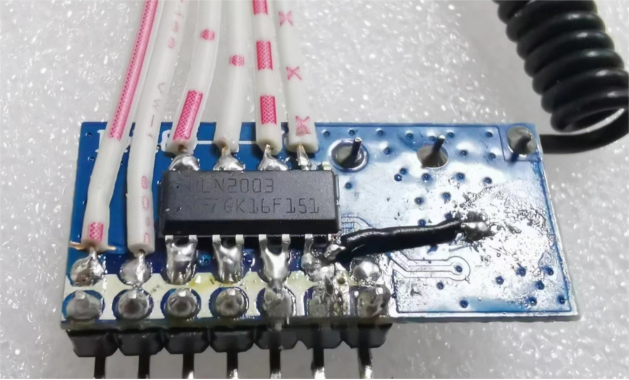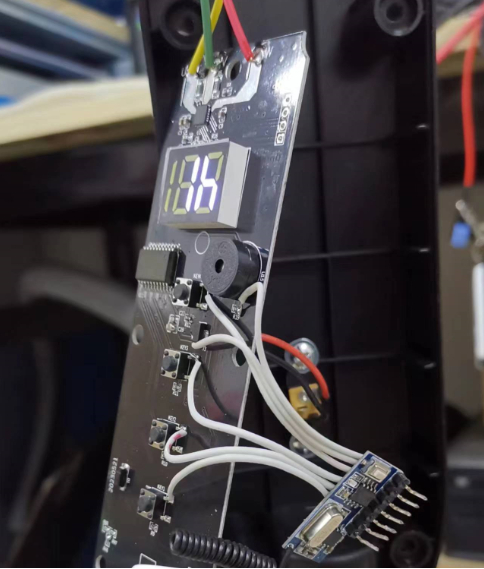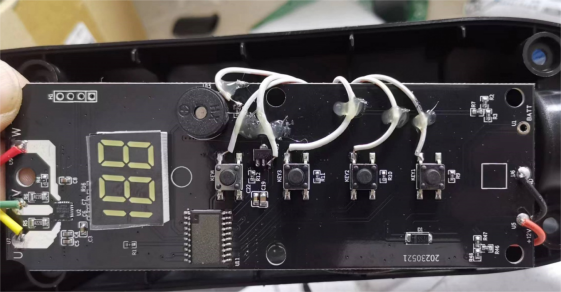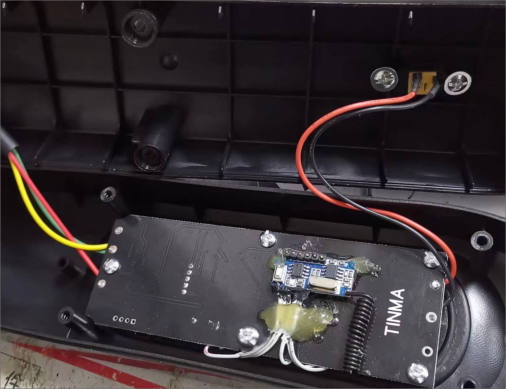
In the world of modern technology and innovation, the quest to enhance everyday conveniences takes us to remarkable destinations. Imagine a brushless variable frequency fan that not only keeps you cool but also beckons with the promise of customization and control. Picture assembling this marvel, eagerly testing its capabilities, and feeling a sense of anticipation as you embark on a journey of transformation. This is the story of how a simple fan becomes a masterpiece of ingenuity, weaving together elements of electronics and creativity to redefine comfort and functionality.
If you have a brushless variable frequency fan from Tianma, and you notice a slight noise when it's assembled and running after a test, it's a good idea to use a 4-channel remote receiving module and remote control. You can place a ULN2003 chip behind the 4-channel remote module for modifications.
Start by soldering.

Pin 12 of the ULN2003 serves as the first channel, pins 34 for the second channel, pins 56 for the third channel, and pin 7 for the fourth channel. This way, you can solder pairs of pins onto the solder pads of the wireless module. Pin 8 should be connected to ground, and pin 9 should be left unconnected.

Here is a photo of the front side.

Once the soldering is complete, attach the wires to the front of the fan control board. Connect GND, 5V, and the wires from channels 1, 2, 3, and 4 directly to their corresponding buttons.

After pairing the remote and receiving modules, proceed to a direct test. You'll be able to perfectly achieve on/off switching, timing, and fan speed adjustment.


Secure the modules and use glue to prevent them from vibrating and falling off, and so on.

Once everything is assembled, it should fit quite well. The A key increases the fan speed, the B key decreases it, the C key is for timing, and the D key is for power.
During testing, it was found that the remote works from up to 20 meters away, allowing you to control the fan from virtually anywhere.
With regards to the advantages of this fan:
· It's affordable and has a brushless variable frequency design.
· It consumes low power.
· It operates on a 12V power supply, making it suitable for outdoor use.
If you frequently go camping, you can connect it to a 12V outdoor battery or a power bank. This way, you can enjoy the fan while having a meal outdoors or even use it in your car at night on the lowest setting without consuming too much power.
So, whether you find yourself under the stars on a camping adventure or seeking solace in the comforts of home, may this fan's tale inspire you to see beyond the surface and discover the endless possibilities that await when imagination meets technology.




